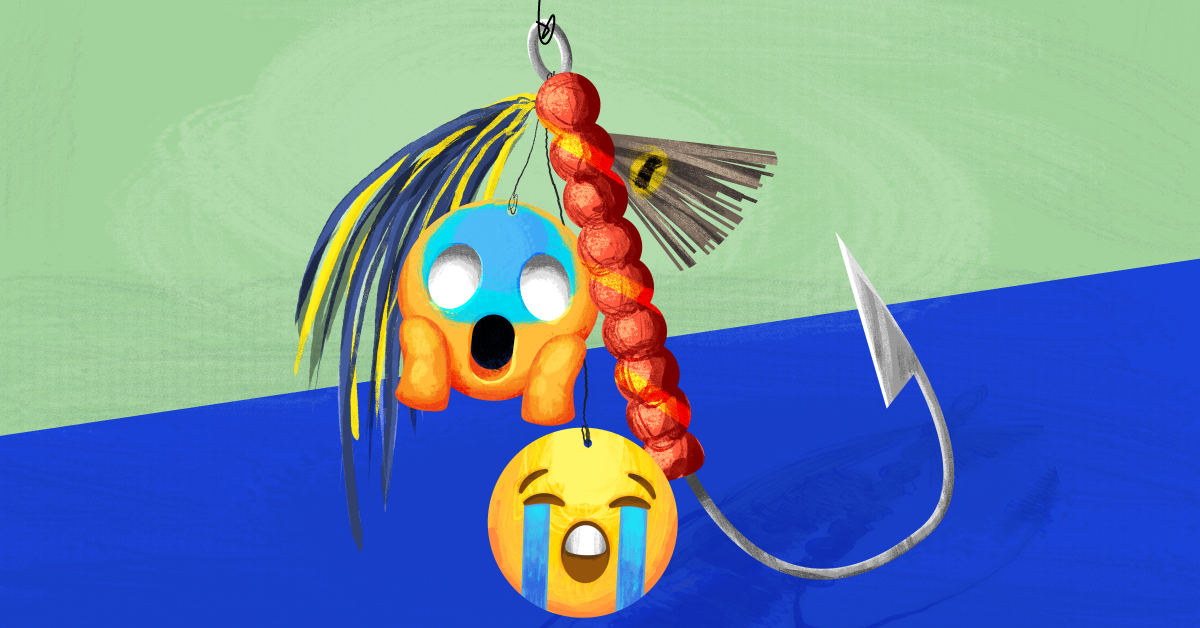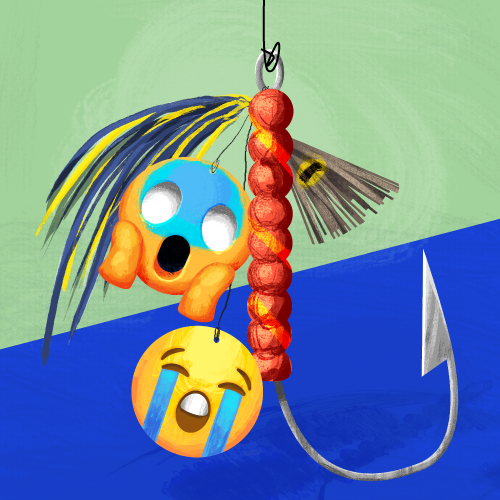
Note: Bark fully recognizes that children's mental health should always be taken seriously whenever signs indicate that they might be struggling. Within those struggles, "sadfishing" is a distinct phenomenon, and this blog post seeks to unpack how that fits into the holistic issue of child mental health. Offering an explanation of sadfishing is not intended to devalue the real and lived anxieties kids are facing, and we always recommend that parents and guardians open conversations around mental health whenever they feel that something might be wrong.
_________
A teen might fish for compliments by posting on social media about how ugly or dumb they think they are. Or maybe they’ll fish for romantic relationships by posing online as someone they’re not. In a similar way, they might seek out emotional support online by making exaggerated social media posts about their negative state of mind. So, what is “sadfishing”? It’s is a trend you might not have heard of before, but it’s becoming common across social media platforms. Here are some signs that your child might be sadfishing and how to respond if it seems like they are.
What is Sadfishing?
When a teen is sadfishing, they’re posting content online that fabricates or exaggerates their emotional struggles with direct references to their anxiety, depression, or suicidal thoughts with a goal of getting attention — not genuine help. This might look like sharing song lyrics that are overly negative, selfies of themselves crying or engaging in self-harm, or even a status update about how the world would be better off without them.
According to psychologist Jo Hemmings, “Sadfishing posts are more likely to touch you, draw empathy from you or even resonate with you.” But there’s one key way to distinguish them from a post that’s genuinely sad. Truly concerning posts — which might clearly state the author’s intent to end their life or share the fact that they’re really struggling and need help — aren’t written simply to attract curiosity. Sadfishing, on the other hand, can be “purposefully lacking a full explanation, drawing out our need to know more, show support or just acknowledge” what the person is going through.
Tweens and teens aren’t the only ones riding this trend. Celebrities like Kendall Jenner also intentionally post emotionally negative content in an attempt to attract an audience. But it’s important to remember that no matter how self-serving a post is, there may be an element of truth to the message, which is why it’s important to pay close attention to your child’s mental health.
How Do You Know if Your Kid is Doing This?
If you’re worried your kid might be sadfishing, be sure you’re following them on any social media platforms they have (which also means keeping an eye out for any “finstas”). You might even make it a family rule that they must allow you to follow them on every account. Even so, your kids might not tell you about every account they open. Luckily, Bark can help you with this by alerting you whenever your child creates a new social media account.
Another way to tell if your kid is sadfishing is to take a look at the kinds of things they’re talking about online. If, for example, they’re writing posts about how they can’t get out of bed but they’re actually spending a lot of time outdoors, they might just be exaggerating the severity of what they’re feeling. It’s certainly possible for a child to pretend like nothing is wrong when they’re not feeling their best, but if they’re genuinely in extreme emotional distress, you’ll likely notice signs of that — a decreased interest in the activities they usually love, lower energy levels than usual, or a consistently low mood.
How Should You Respond?
If you think your teen has been sadfishing, your first instinct might be to reprimand them for sharing personal emotions with such a public audience. But while there’s certainly a time and place to discuss the importance of how their posts contribute to their public image, that probably shouldn’t be your first response.
Instead of scolding your child, drive home the fact that you care deeply about their mental health and want to do everything you can to support them. Remind them that they can always come to you if they’re having a hard time, but if they’re uncomfortable speaking with you about something, they can go to another trusted adult such as their school counselor. This might also be a good time to ask your child whether they’d like to talk with a therapist.
It’s important to note that there are external threats as well. Online predators often seek out vulnerable kids, so if a child is repeatedly looking to the internet for emotional support, a predator might decide to reach out to them. Of course, a kid is never responsible for an adult’s inappropriate behavior. Children have no agency in this situation, and so they are never at fault for the actions of a predator. But it’s worth reminding your kid that broadcasting their emotional vulnerability online can lead to responses they don’t expect or want.
Raising digital natives isn’t easy, but instilling in your kids the importance of digital citizenship will better prepare them for the future.
Read more
Bark helps families manage and protect their children’s digital lives.






